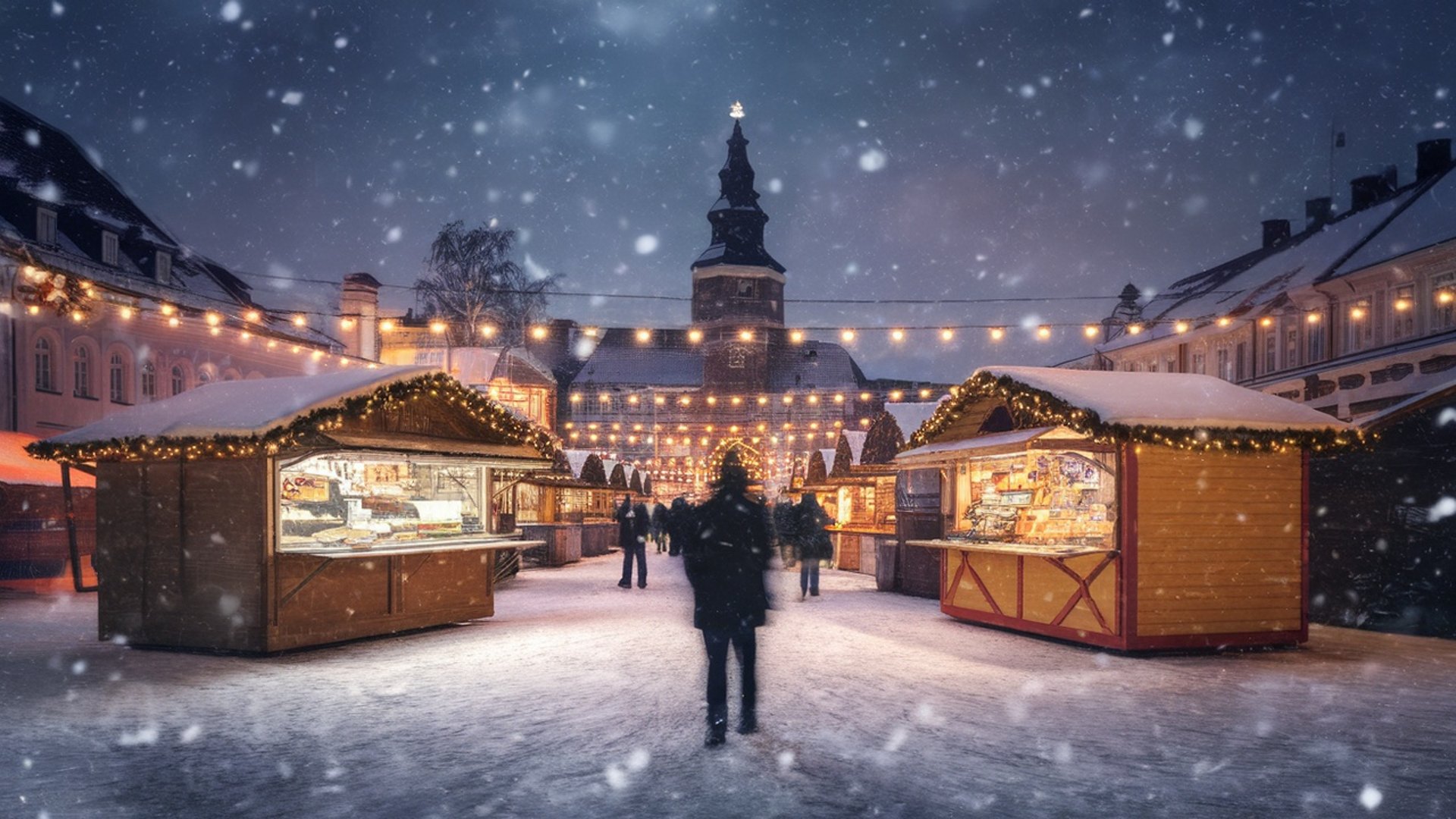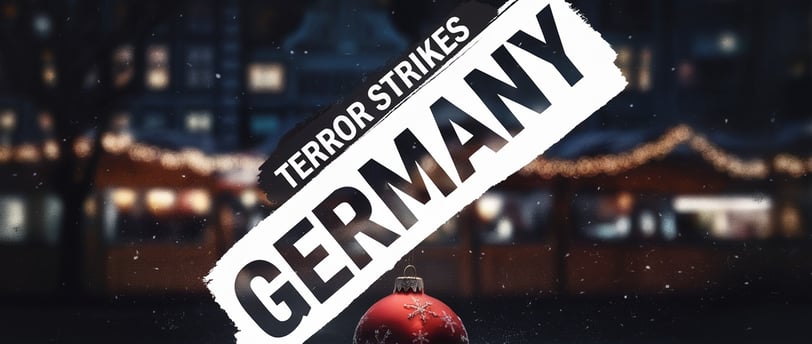
German Christmas Market Attack: Suspect Remanded in Custody
Blog post description.In a harrowing incident that has sent shockwaves through Germany, a man accused of driving his car into a bustling Christmas market in Magdeburg, killing five and injuring over 200, has been remanded in custody. Among the victims are four women, aged 45, 52, 67, and 75, as well as a nine-year-old boy.
NEWSHOME
12/22/20245 min read



The tragedy occurred on Friday evening, transforming a joyous holiday celebration into a scene of chaos and grief.
This blog delves into the events of that fateful night, the suspect’s background, the ongoing investigation, and the broader societal implications of this devastating attack.
The Tragic Events Unfold
The Christmas market in Magdeburg, known for its twinkling lights, festive stalls, and warm community atmosphere, became the site of unimaginable horror on Friday, shortly after 7:00 PM local time. According to eyewitness accounts, a black BMW sped through the crowded marketplace, leaving a trail of destruction in its wake.
Witnesses described the heart-stopping moment when the car plowed through the crowd. Nadine, one of the marketgoers, recounted to the German newspaper Bild how she was enjoying the market with her boyfriend Marco when the vehicle struck. “He was hit and pulled away from my side,” she said, still visibly shaken. “It was terrible.”
Lars Frohmüller, a reporter for German public broadcaster MDR, described the aftermath as a "chaotic situation," with "blood on the floor" and emergency personnel racing to assist the injured. Over 100 police officers, medics, and firefighters, as well as 50 rescue service personnel, were deployed to the scene. Their efforts, however heroic, could not undo the devastation wrought by the attack.
The Victims and Their Families
The human toll of this attack is staggering. Among the deceased are four women spanning generations, from 45 to 75 years old, and a young boy who had been visiting the market with his family. For the injured—more than 200 people—the physical and emotional scars may take years to heal. Many remain in critical condition, with doctors working tirelessly to save lives.
A memorial service held at Magdeburg Cathedral on Saturday evening drew hundreds of mourners, including victims’ families, emergency responders, and high-ranking government officials. German Chancellor Olaf Scholz attended the service, offering words of condolence and solidarity. “This is a dreadful tragedy,” Scholz said, “so many people were injured and killed with such brutality in a place meant to bring joy and celebration.”
The city of Magdeburg, still grappling with the enormity of the loss, has come together in collective mourning. Candlelight vigils, floral tributes, and messages of support line the streets near the market, a somber reminder of the lives lost and the resilience of a community united in grief.
The Suspect: Taleb al-Abdulmohsen
The suspect has been identified by local media as Taleb al-Abdulmohsen, a 50-year-old Saudi national who has lived in Germany since 2006. A psychiatrist by profession, al-Abdulmohsen resided in Bernburg, about 40 kilometers (25 miles) south of Magdeburg. In 2016, he was granted refugee status in Germany, a recognition of his claims of persecution in his home country.
Al-Abdulmohsen ran a website aimed at assisting ex-Muslims fleeing oppressive regimes in the Gulf region. His social media activity suggests he was critical of Islam, and authorities have found no evidence linking him to Islamist extremism. However, this complexity has fueled debates about his motives and the broader implications of his actions.
Saudi officials reportedly warned German authorities about al-Abdulmohsen’s “extreme views” through formal communications, known as "Notes Verbal." These warnings were allegedly ignored, though counter-terrorism experts caution that such warnings might be part of a disinformation campaign aimed at discrediting him for his advocacy work.



Motives and Investigation
The investigation is ongoing, with prosecutors and police piecing together the events leading up to the attack. Prosecutor Horst Walter Nopens noted that one possible motive could be related to al-Abdulmohsen’s dissatisfaction with the treatment of Saudi refugees in Germany. Preliminary findings indicate that the suspect acted alone, exploiting an emergency vehicle access point to enter the market.
The charges against al-Abdulmohsen include five counts of murder, multiple counts of attempted murder, and numerous instances of dangerous bodily harm. He has been remanded in custody following a court hearing on Saturday evening.
Despite the gravity of the charges, there are still unanswered questions. What triggered the attack? Were there missed warning signs? Could this tragedy have been prevented? Investigators are meticulously reviewing witness accounts, security footage, and forensic evidence to build a clearer picture.
Magdeburg police have also appealed to the public for assistance, urging anyone with photos or videos of the incident to come forward. The community’s cooperation could prove vital in understanding the full scope of the attack.
The investigation is ongoing, with prosecutors and police piecing together the events leading up to the attack. Prosecutor Horst Walter Nopens noted that one possible motive could be related to al-Abdulmohsen’s dissatisfaction with the treatment of Saudi refugees in Germany. Preliminary findings indicate that the suspect acted alone, exploiting an emergency vehicle access point to enter the market.
The charges against al-Abdulmohsen include five counts of murder, multiple counts of attempted murder, and numerous instances of dangerous bodily harm. He has been remanded in custody following a court hearing on Saturday evening.
Despite the gravity of the charges, there are still unanswered questions. What triggered the attack? Were there missed warning signs? Could this tragedy have been prevented? Investigators are meticulously reviewing witness accounts, security footage, and forensic evidence to build a clearer picture.
Magdeburg police have also appealed to the public for assistance, urging anyone with photos or videos of the incident to come forward. The community’s cooperation could prove vital in understanding the full scope of the attack.
A Nation Responds
The attack has reignited discussions across Germany about refugee policies, integration, and public safety. Chancellor Olaf Scholz vowed to allocate “all resources” to support the victims and ensure a thorough investigation. Reiner Haseloff, the premier of Saxony-Anhalt state, expressed his condolences and pledged to work closely with law enforcement to uncover the truth.
The tragedy also highlights the delicate balance Germany must navigate as a nation that has embraced refugees while grappling with the challenges of integration and security. Public opinion is divided, with some expressing fears about the implications of the suspect’s refugee status, while others caution against using this tragedy to stigmatize an entire community.
Experts have warned against drawing hasty conclusions. “This is a complex case,” said Dr. Maria Eckhart, a political analyst specializing in migration policy. “While it is essential to investigate this individual’s actions and motives, we must be careful not to generalize or foster division.”



The Human Cost
Beyond the political and societal debates lies the heart of this tragedy: the human cost. Families have been shattered, lives irrevocably changed, and a community left to grapple with grief and trauma. For those who survived the attack, the road to recovery will be long and fraught with challenges.
Local organizations have stepped in to provide counseling and support for victims and their families. The Magdeburg community has also rallied, organizing blood drives and fundraising campaigns to assist those affected. These acts of solidarity underscore the resilience and compassion that define this close-knit city.
Moving Forward
As Magdeburg mourns, it also begins the difficult process of healing. The attack serves as a stark reminder of the vulnerabilities that exist even in the most cherished spaces. It calls for vigilance, empathy, and a renewed commitment to addressing the root causes of violence and division.
For now, the focus remains on honoring the victims, supporting the injured, and ensuring justice is served. The Christmas market, a symbol of joy and community, will undoubtedly carry the weight of this tragedy for years to come. Yet, in the resilience of its people, there is hope for a brighter future.
Conclusion
The Magdeburg Christmas market attack has left an indelible mark on Germany. As the investigation unfolds and the nation grapples with the implications, one thing remains clear: the lives lost and the pain inflicted will not be forgotten. In the face of such darkness, the unity and compassion of the community shine as a beacon of hope, reminding us all of the strength found in togetherness.
